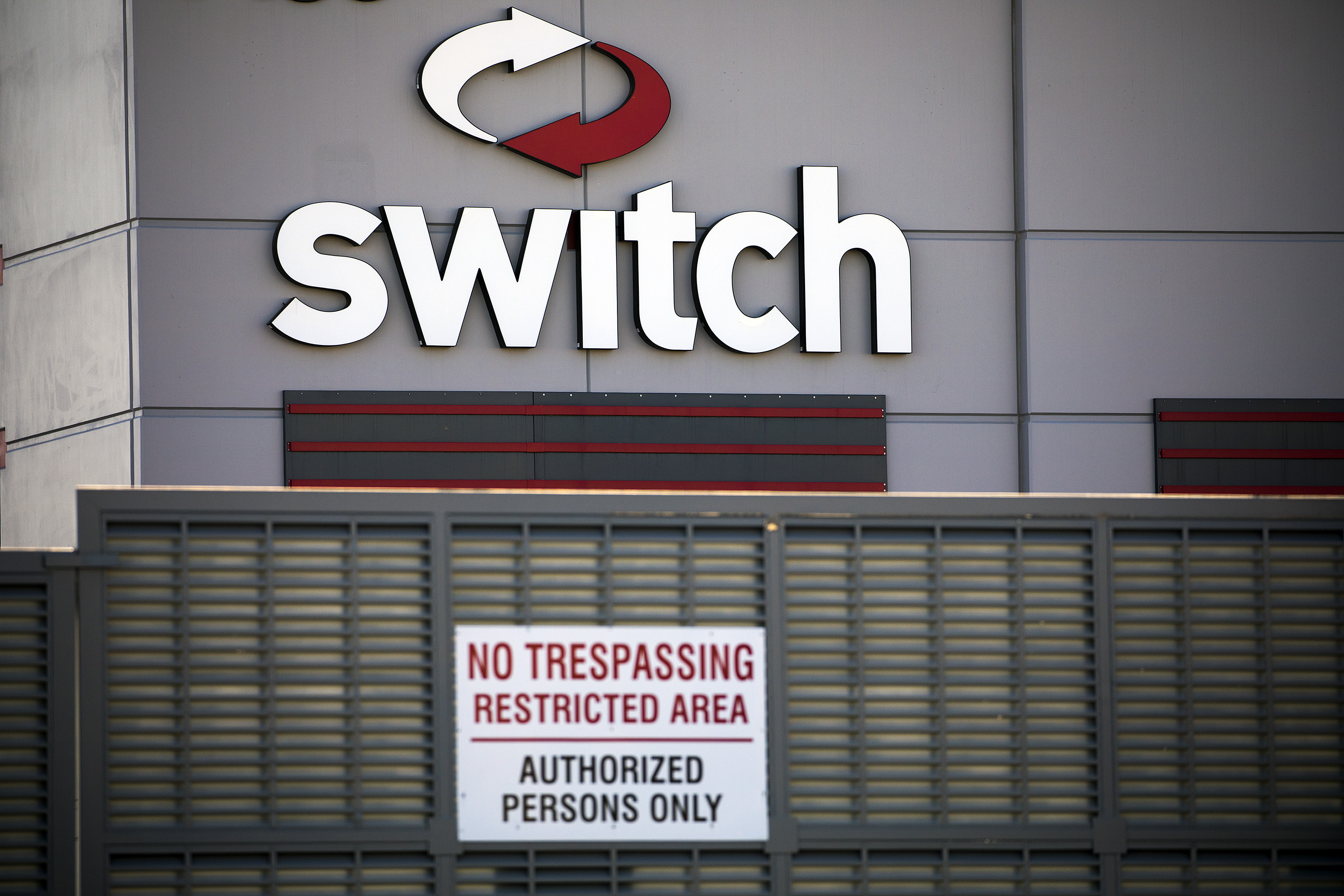Despite tense relationship, NV Energy completes sale of renewable energy credits to Switch

Few companies in Nevada have a more acrimonious relationship than Switch and NV Energy.
The two corporate behemoths have been at odds since Switch became the first major Nevada company to leave the electric utility’s service in 2016, bristling at having to pay a multimillion dollar exit fee for the right to do so. The data center giant set up an under-the-radar nonprofit that pestered NV Energy during its triennial rate case last year, and the two companies have poured millions of dollars into opposing sides of the Energy Choice Initiative. Switch’s enigmatic CEO and founder Rob Roy has made the bad blood abundantly clear:
“The hardest thing for me in Nevada in 18 years of building this company, the hardest single thing to work on, not clients, not success, not technology, not politics, not any of those things, it’s been one thing and one thing that’s been the hardest hurdle to overcome has been NV Energy,” Roy said in a February interview.
But outside the headlines, the complex world of energy means the two feuding companies are still intertwined.
Last week, regulators with state’s Public Utilities Commission approved an application allowing NV Energy to sell a large chunk of surplus renewable energy credits to Switch, to help the data center company achieve its goal of operating on 100 percent renewable energy.
Like other states with a renewable portfolio standard, Nevada measures utility compliance with the standard through the use of portfolio energy credits — essentially certificates for every kilowatt-hour of renewably-produced energy generated (kilowatt hours are how energy use over time is typically measured — a 250-watt television will use one kilowatt hour in four hours, for example).
The state has a “compliance market” for the credits, where producers can sell them to utilities or other parties in order for them to meet the RPS goals. Power plant producers aren’t the only participants in the marketplace — up until 2015, rooftop solar owners could procure and sell energy credits at a 2.4 multiplier rate.
That means there’s a discrepancy between the reported RPS compliance and the actual mix of renewable fuel consumed. In 2016, for example, multiplier credits and “banked” credits earned in previous years helped NV Energy meet the 20 percent RPS minimum standard required under law, while the company reported a renewable fuel mix of around 13.5 percent.
Presumably, the biggest buyer of the credits would be NV Energy, the state’s primary electric utility and the company subject to the requirements of the portfolio standard.
So why did NV Energy sell the credits to Switch? Two reasons — the aforementioned decision to leave the utility’s service as a customer in 2016, and the company’s stated benchmark to power its data centers with 100 percent renewable energy — a lofty goal that has won the company praise from environmental groups such as Greenpeace.
Under the terms of the order, Switch will purchase up to 170,000 kilowatt hours worth of portfolio credits generated in 2016 and 2017 at a price of $2.71 each. The order approving the sale stated that Switch was aware the price of the credits was above market value, but wanted to purchase the credits anyways as they could be tied back to the company’s solar plants that opened last year.
The backdated energy credits stem from agreements Switch and NV Energy signed in 2015 over the solar plants, with the data center giant agreeing to purchase all produced energy credits from two plants for a 20 year period. Combined, the minimum purchase agreement for the two plants equals about $34.8 million, according to a Switch filing with the Securities and Exchange Commission.
Prior to approval by the full commission, the agency’s general counsel brought up concerns that the sale could prevent the utility from meeting RPS goals in the future due to the “unpredictability” of large-scale solar plants to meet their targeted generating goals. The 110-megawatt Crescent Dunes solar plant near Tonopah missed its 2017 contractual credit requirement by a “significant” margin — about 476,000 kilowatts worth of portfolio credits.
In its order, the commission wrote that ratepayers “will not bear the risk of non-compliance” with the RPS target as NV Energy’s existing power purchase agreements require providers to pay the utility the cost of portfolio credits if they don’t hit their generation targets.
Disclosure: Switch and NV Energy have donated to The Nevada Independent. You can see a full list of donors here.
